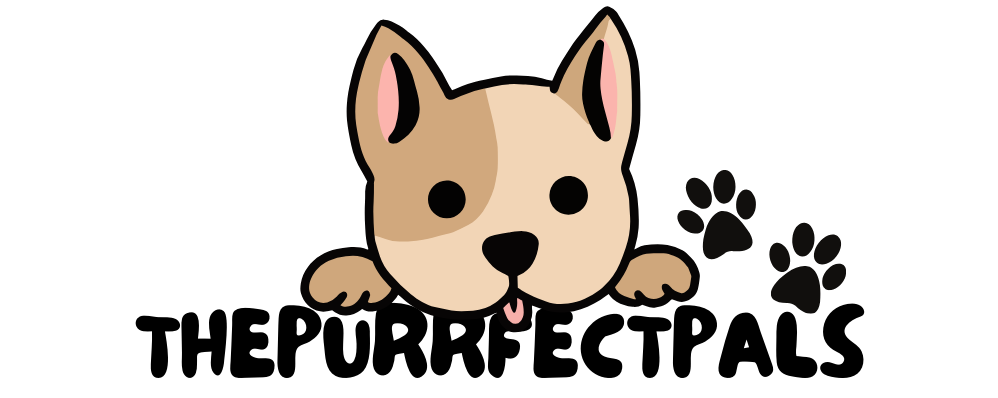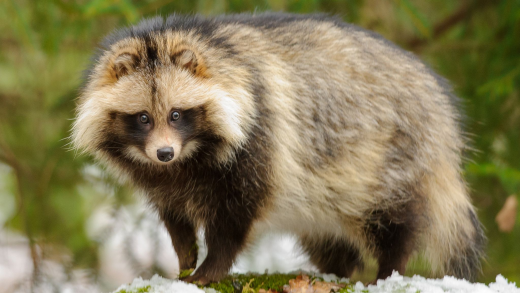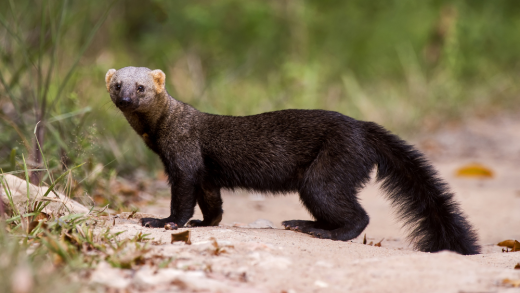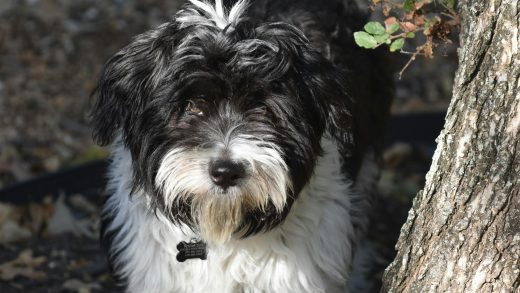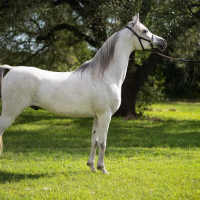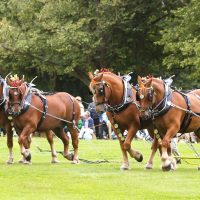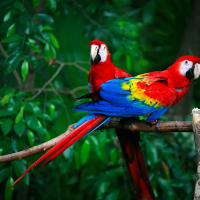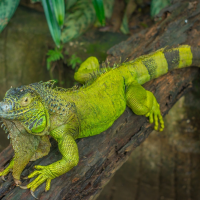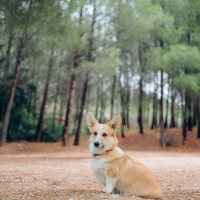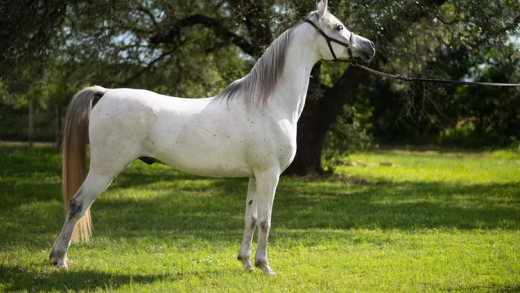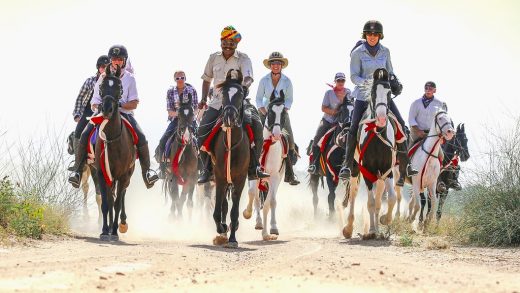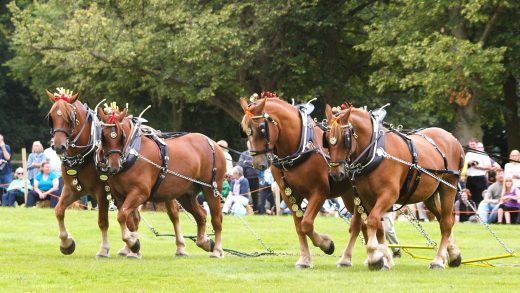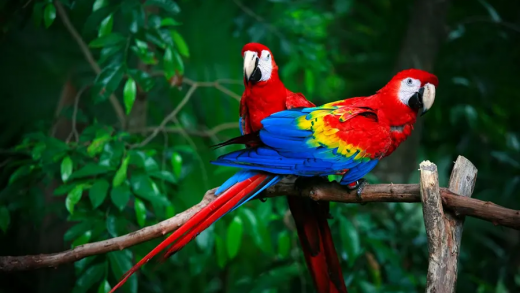The kinkajou is a mammal found in tropical rainforests. It belongs to the family Procyonidae and is related to olingos, coatis, raccoons, ringtails, and cacomistles. The kinkajou is the only member of the genus Potos and is also known as the “honey bear,” although this name is also used for the unrelated sun bear. Even though kinkajous live in trees, they are not closely related to other tree-dwelling mammals like primates or some mustelids.

Table of Contents
Kinkajou: Quick Facts
Scientific Name: Potos flavus
Origin: Central and South America
Size: 16-24 inches (40-60 cm) body length; 4-7 pounds (2-3 kg)
Lifespan: 20-25 years in captivity; 15-20 years in the wild
Diet: Frugivorous, primarily eating fruits, nectar, and occasionally small animals
Activity: Nocturnal, arboreal, highly active in trees
Price: $2500-$3500
History and Origin
Kinkajous also known as honey bears are from the thick forests of Central and South America ranging from southern Mexico to Brazil. They belong to the Procyonidae family which includes raccoons and coatis. Kinkajous have adjusted to a life in the treetops where their tails and agile bodies helps them to navigate the forest with ease. They have been admired for their unique adaptations and are sometimes kept as exotic pets though they are wild animals.

Physical Characteristics
Kinkajous are small agile mammals with a unique appearance. They have a body length of 16 to 24 inches (40 to 60 cm) and their long tails add another 16 to 22 inches (40 to 55 cm). Weighing between 4 to 7 pounds (2 to 3 kg) they possess short dense fur that varies in color from golden to brownish gray. Their large round eyes are perfect for night vision and their small rounded ears are sensitive to sounds. Kinkajous have nimble clawed hands and feet which they use adeptly to grasp branches and food.

Temperament and Personality
Kinkajous are generally alone and spend most of their time foraging and exploring at night. They are curious and intelligent animals known for their playful and sometimes violent behavior. In the wild they are often seen hanging upside down from their tails which they use for balance and as an extra limb. While they can be loving with handlers they trust and can also be defensive and bite if they feel threatened or are not properly socialized. They communicate through a range of vocalizations, including hisses, barks and chirps.

Exercise and Activity Needs
Kinkajous are highly active and agile needing plenty of space and opportunities for climbing and exploration. They are most active at night spending hours searching for food and traveling the forest. In captivity they need a large enriched environment with branches, ropes and platforms to mimic their natural habitat and boost their physical activity. Providing a variety of toys and puzzles can also help keep them mentally stimulated and prevent boredom.
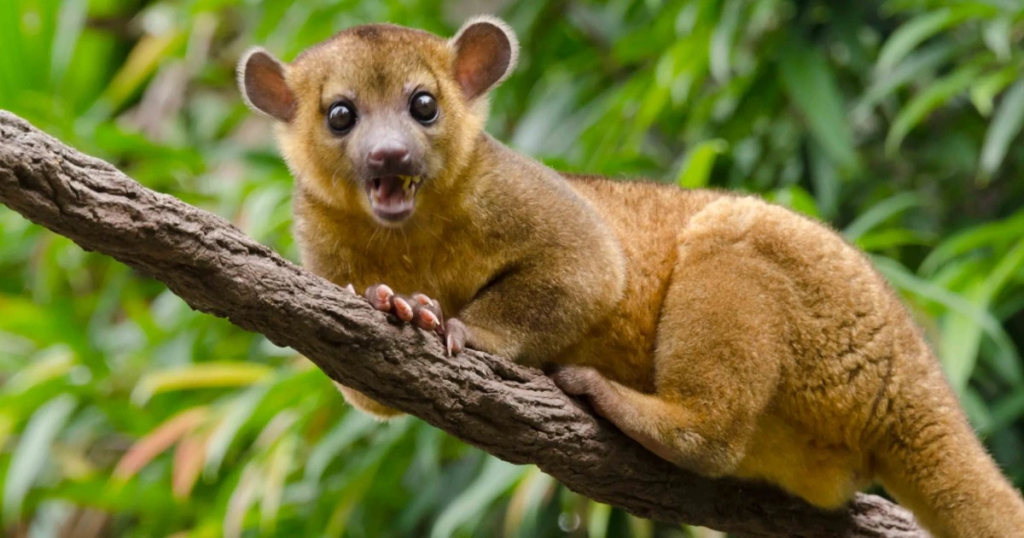
Grooming and Needs
Kinkajous have relatively low grooming needs as they keep their dense fur clean through self-grooming. Their fur is naturally short and smooth requiring minimal maintenance. However they can help themselves from brushing themselves to remove loose hair. Regular cleaning of their living space is important to maintain hygiene and prevent the buildup of waste. Ensuring they have access to fresh water and a diet rich in fruits is crucial for their overall well being.
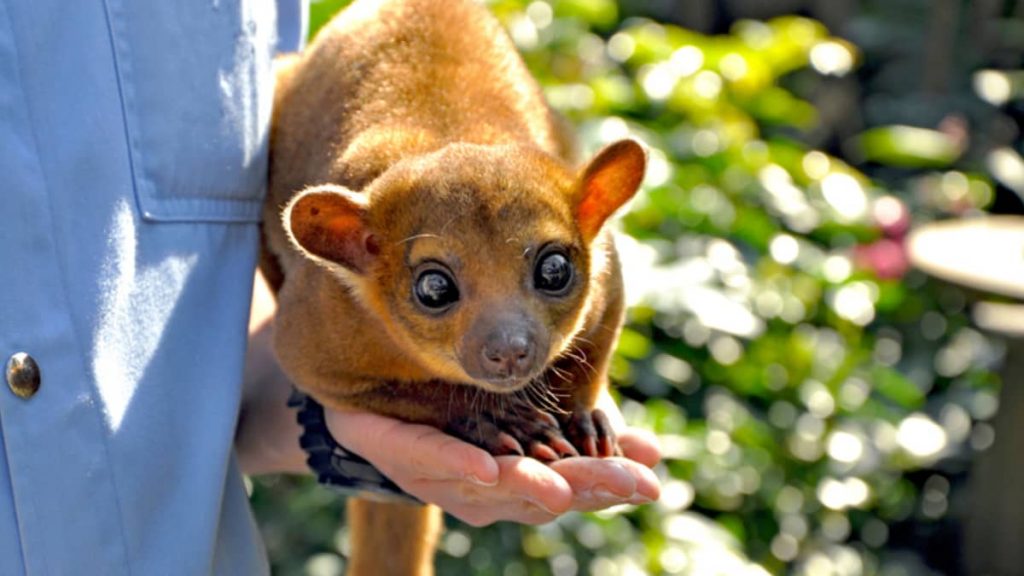
Health and Common Concerns
Kinkajous are generally healthy but can be prone to certain issues especially in captivity. They require a diet high in fruits and nectar to survive. Being overweight can be a concern if they do not receive enough exercise or are overfed. Dental problems can arise from a lack of proper chewing substrates. Like many small mammals they can be sensitive to respiratory infections and parasitic infestations. Regular veterinary checkups and a balanced diet are vital to their health.
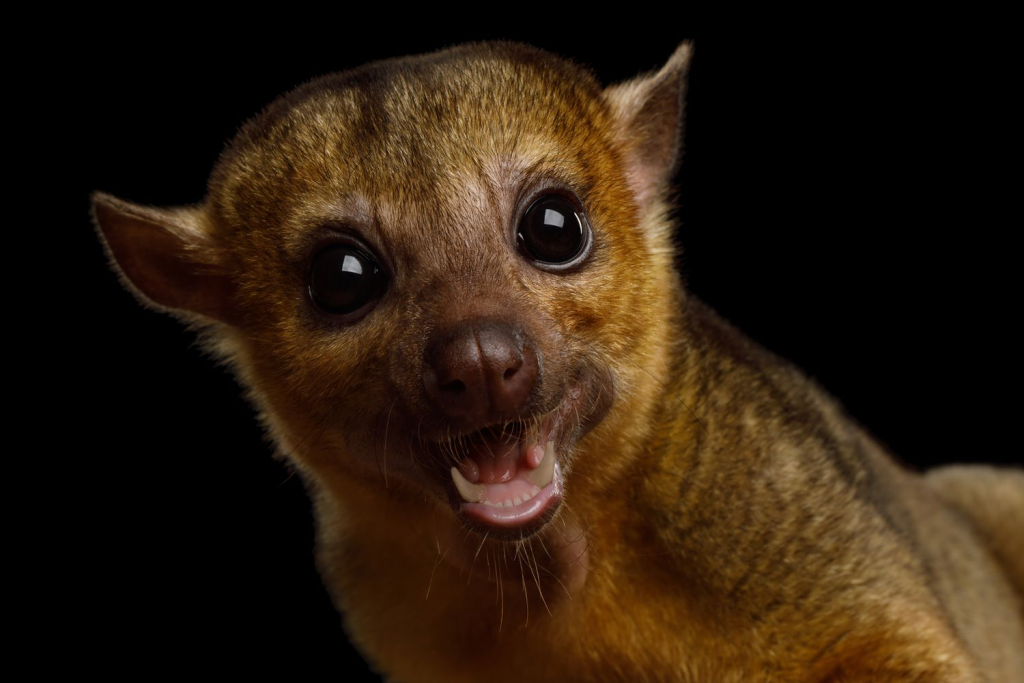
Training and Socialization
Training and socializing kinkajous should start early in their life as they are intelligent and responsive. They can be trained to perform simple tasks and follow orders when motivated by food rewards. Socialization involves exposure to new environments and handlers helping them become used to humans. However their nature is towards a solo lifestyle so they may not always socialization with other animals.

Conclusion
Kinkajous are fascinating creatures with unique adaptations for life in the Central and South America. Their playful and curious nature makes them fascinating to observe even though they require specific care and a wild life rich environment to thrive. Understanding their needs for space and diet is essential for their well-being. While they can be loving they retain wild instincts and require careful handling and socialization. Appreciating the kinkajou’s natural behaviors and habitat helps in providing them with a healthy and fulfilling life.
People also search for: Common Health Issues in Exotic Pets and How to Prevent Them 2024(Mammals)
